Installing a dog car seat involves securing the seat to the vehicle and ensuring the dog is safely harnessed. In doing so, you provide a comfortable and secure travel experience for your furry friend.
Dog car seats not only protect your pet from injuries but also prevent distractions while driving. By following a few simple steps, you can easily install a dog car seat and keep your canine companion safe on the road. Whether you’re planning a short trip or a long journey, this guide will provide you with all the necessary instructions to install a dog car seat properly.
Ensure Your Dog’s Safety During Car Rides
Protect your dog from injuries and accidents
Ensuring the safety of your furry friend during car rides is of utmost importance. Dogs are curious creatures and can easily get injured or cause accidents if left unrestrained. To protect your dog and provide a safe journey for all, installing a dog car seat is crucial.
A dog car seat keeps your pet secure and prevents them from roaming around the vehicle. It acts as a protective barrier, minimizing the risk of injuries. Whether you’re going on a short trip to the park or a long drive, investing in a dog car seat is a wise decision that will keep your furry friend safe and sound.
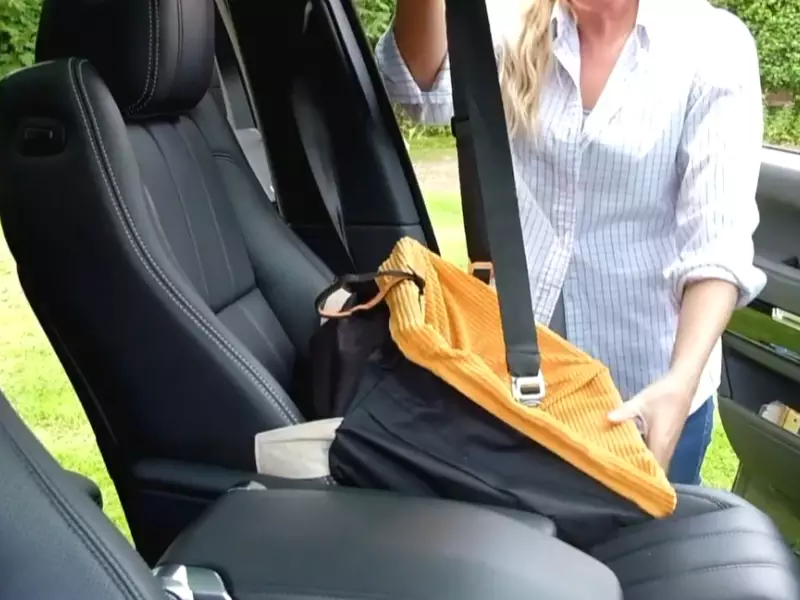
Minimize distractions and prevent them from roaming in the vehicle
Having your dog roam freely in the car not only poses a danger to them but also to the driver and other passengers. Dogs can be energetic and easily distracted, which increases the risk of accidents on the road. As a responsible pet owner, it’s essential to minimize distractions and create a secure environment in the vehicle.
By installing a dog car seat, you can prevent your pet from moving around excessively, reducing the chances of distractions while driving. This helps you stay focused on the road, ensuring a safer journey for everyone in the car.
Considerations For Selecting A Suitable Dog Car Seat
Considerations for selecting a suitable dog car seat
When it comes to traveling with your furry friend, their safety and well-being should always be a top priority. That’s why investing in a dog car seat is so important. Not only does it keep your dog secure during car rides, but it also provides them with a comfortable space where they can relax and enjoy the journey. However, with so many options available in the market, selecting the right dog car seat can be a daunting task. In this section, we will discuss the key considerations you should keep in mind when choosing a suitable dog car seat.
Size and weight capacity
One of the first factors to consider when selecting a dog car seat is its size and weight capacity. Dogs come in various shapes and sizes, so it’s vital to choose a seat that suits your dog’s dimensions. An ill-fitting car seat may not provide the necessary stability and protection. To determine the right size, measure your dog from the base of their tail to the base of their neck. Then check the manufacturer’s recommendations to ensure you choose a car seat that accommodates your dog’s size.
Pro Tip: Choosing a car seat with an adjustable size feature can be beneficial if you have a growing puppy or multiple dogs of different sizes.
Furthermore, make sure to take note of the weight capacity of the seat. Different models have varying weight limits, and exceeding this limit could compromise your dog’s safety. Be sure to consider not only your dog’s current weight but also any potential weight gain in the future.
Installation options
The next crucial consideration is the installation options available for the dog car seat. The most common installation methods include harness attachment and seat belt attachment.
For harness attachment, the car seat comes with built-in harnesses that keep your dog securely in place during the ride. This method is particularly useful for dogs who may be prone to moving around in the car or have a tendency to get anxious during travel.
On the other hand, seat belt attachment involves securing the dog car seat using the seat belt of your vehicle. This option provides stability and prevents the seat from skidding or shifting during the journey. It also allows for easy installation and removal, which can be convenient if you frequently need to move the car seat between vehicles.
Pro Tip: Opt for a dog car seat that offers both harness and seat belt attachments for added flexibility and security.
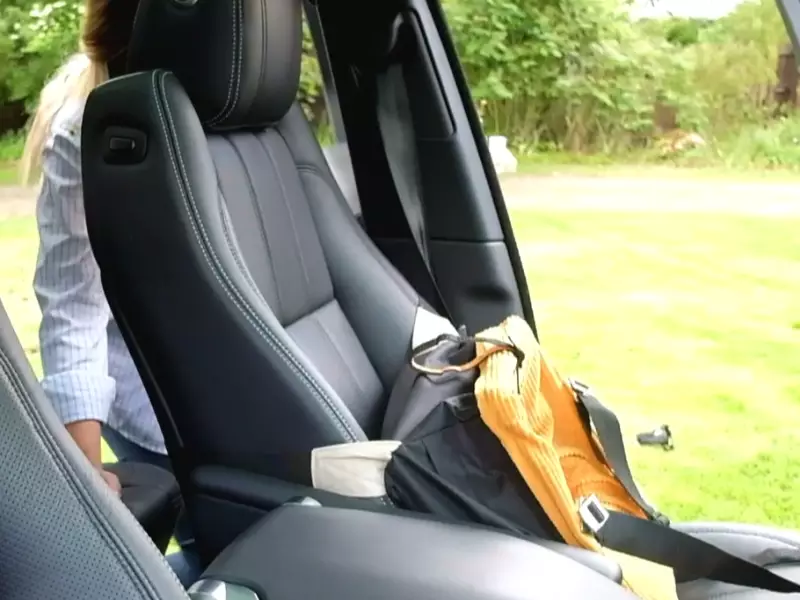
Comfort features for your dog’s well-being
In addition to safety, it’s essential to consider the comfort features offered by the dog car seat. Just like us, dogs need to feel secure and comfortable during car rides to reduce anxiety and motion sickness. Look for car seats that have plush padding and supportive sides to provide a cozy and relaxing environment for your furry friend.
Other comfort features to consider include adjustable straps, which allow you to customize the fit for your dog, and additional storage pockets where you can keep their favorite toys or treats. Some car seats even come with a removable and washable cover, making it easy to keep the seat clean and fresh.
Pro Tip: Introduce your dog to the car seat gradually, using positive reinforcement and treats to create a positive association. This will help them feel more comfortable and relaxed during car rides.
By considering these key factors – size and weight capacity, installation options, and comfort features – you can select a suitable dog car seat that ensures your furry companion’s safety and well-being. Remember, a little bit of research and thoughtful consideration goes a long way in providing a secure and enjoyable traveling experience for both you and your dog.
Researching And Comparing Different Dog Car Seat Models
Reviews and Ratings of Popular Dog Car Seats
One of the most important steps in finding the right dog car seat for your furry friend is researching and comparing different models. With so many options available on the market, it can be overwhelming to make a decision. Fortunately, there are several factors you can consider to narrow down your choices effectively.
Start by reading
Evaluating Safety Certifications and Features
Safety should be your top priority when choosing a dog car seat. Evaluating safety certifications and features is essential to ensure your pet’s well-being on the road. Look for dog car seats that are
In addition to certifications, consider the following safety features:
- Adjustable safety harness: A secure harness that keeps your dog in place and prevents them from jumping out of the seat.
- Sturdy construction: A dog car seat made from high-quality materials that can withstand sudden stops or impacts.
- Side impact protection: Extra padding or reinforced walls to protect your dog in case of a collision from the side.
Checking for Durability and Ease of Cleaning
When investing in a dog car seat, you’ll want to make sure it lasts for a long time. Check for
Additionally, considering ease of cleaning is crucial, as accidents and messes are bound to happen during car rides. Look for dog car seats that are easy to
Ensuring A Secure Installation With Harness Attachment
When it comes to traveling in the car with your furry friend, ensuring their safety is of utmost importance. Installing a dog car seat with a harness attachment is an effective way to keep your dog secure and comfortable during the ride. In this section, we will guide you through the necessary steps to ensure a secure installation with harness attachment, from choosing the appropriate harness size to properly securing it to both the car seat and your dog.
Choosing the Appropriate Harness Size for Your Dog
Before installing a dog car seat with a harness attachment, it’s essential to select the right size harness for your dog. A properly sized harness is crucial for both their comfort and safety. To determine the appropriate harness size, you’ll need to measure your dog’s chest circumference. Use a flexible tape measure and wrap it around the widest part of their chest, just behind their front legs. Once you have the measurement, refer to the manufacturer’s sizing chart to find the corresponding harness size.
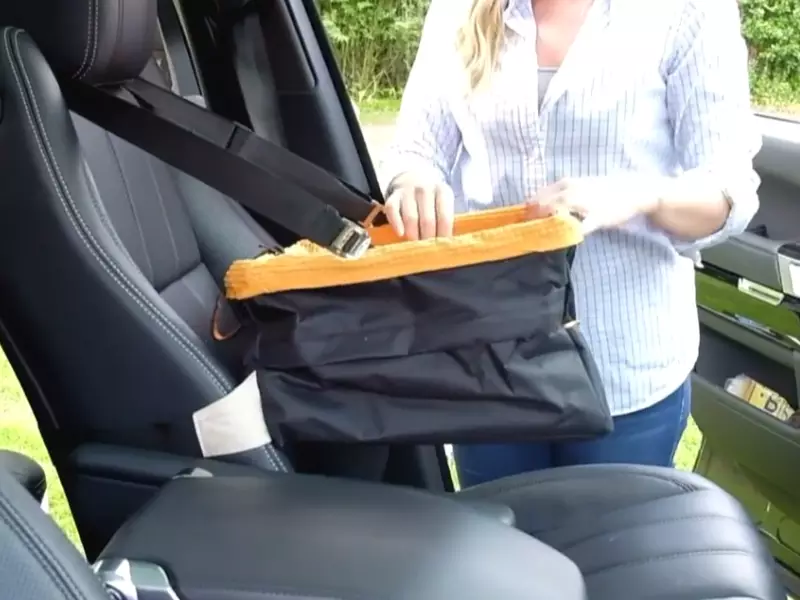
Properly Securing the Harness to the Car Seat and Your Dog
Once you have the correct harness size, it’s time to secure it to both the dog car seat and your furry friend. Start by placing the car seat in the desired location in your vehicle. Make sure it is securely fastened according to the manufacturer’s instructions. Next, locate the harness attachment points on the car seat. These attachment points are usually metal rings or loops located on the back or sides of the seat. Thread the harness straps through these attachment points and ensure they are properly aligned.
To secure the harness to your dog, place it over their back, with the straps running along each side of their body. Adjust the straps so they fit comfortably and snugly, ensuring that your dog cannot slip out of the harness. Use the buckles or clips provided to fasten the harness securely. Double-check that all the buckles are properly engaged and that the harness is securely attached to both the car seat and your dog.
Adjusting the Straps for a Snug and Comfortable Fit
After securing the harness, it’s important to adjust the straps for a snug and comfortable fit. This will not only enhance your dog’s comfort during the ride but also ensure their safety. Check that the straps are not too loose or too tight. You should be able to fit two fingers comfortably between the straps and your dog’s body. Make any necessary adjustments by lengthening or shortening the straps until you achieve the perfect fit.
Keep in mind that dogs come in different shapes and sizes, so it may take some trial and error to find the optimal strap adjustments. Remember to periodically check the harness and straps during your journeys to ensure they remain secure and in the correct position.
By following these steps to ensure a secure installation with harness attachment, you can have peace of mind knowing that your dog will be safe and protected during car rides. Get started today and make your furry friend’s car travel experience a comfortable and secure one!
Installing A Dog Car Seat Using The Seat Belt Attachment Method
Installing a dog car seat is essential for ensuring the safety and comfort of your furry friend during car rides. One of the most common methods of installation is using the seat belt attachment. This method provides a secure and stable connection between the car seat and the vehicle.
Understanding the Recommended Seat Belt Attachment Points
Before you begin the installation process, it’s important to understand the recommended seat belt attachment points. These attachment points may vary depending on the specific dog car seat you have purchased.
Typically, the dog car seat will have designated loops or straps that are specifically designed to connect to the seat belt. These attachment points are strategically positioned to provide optimal stability and security during the car ride.
Securing the Dog Car Seat Using the Seat Belt
Once you have identified the recommended seat belt attachment points, it’s time to secure the dog car seat in place. Follow these simple steps to ensure a proper installation:
- Position the dog car seat in the desired location within your vehicle, such as the back seat or the front passenger seat.
- Thread the seat belt through the designated loops or straps on the dog car seat.
- Insert the seat belt buckle into the seat belt receptacle and engage the locking mechanism.
- Tighten the seat belt by pulling it snugly to remove any slack.
- Ensure that the dog car seat is securely fastened and doesn’t move or shift when you apply pressure.
Adjusting the Seat Belt for a Secure Installation
Proper adjustment of the seat belt is crucial to achieving a secure installation of the dog car seat. Follow these tips to ensure optimal safety:
- Adjust the height of the dog car seat if possible to align with your pet’s size and comfort.
- Make sure the seat belt is not twisted and lays flat to provide maximum stability.
- Check for any signs of excessive looseness or tightness in the seat belt connection. The dog car seat should have enough freedom of movement to keep your pet comfortable while maintaining a secure position.
- Regularly inspect the seat belt and attachment points for signs of wear or damage.
By following these steps and tips, you can install a dog car seat using the seat belt attachment method with ease. Remember to always prioritize the safety and well-being of your furry friend during car rides.
Additional Considerations For A Safe Installation
Positioning the dog car seat in the back seat of the vehicle
Proper positioning of your dog car seat is essential to ensure their safety and comfort during car rides. The back seat is often the safest location for your furry friend, as it minimizes the risk of injury in case of sudden stops or accidents. When securing the dog car seat in the back seat, place it in the center to prevent your pet from accessing the doors or attempting to jump out while the vehicle is in motion. This central position also helps to distribute the weight evenly, providing a more stable and balanced ride for your pet.
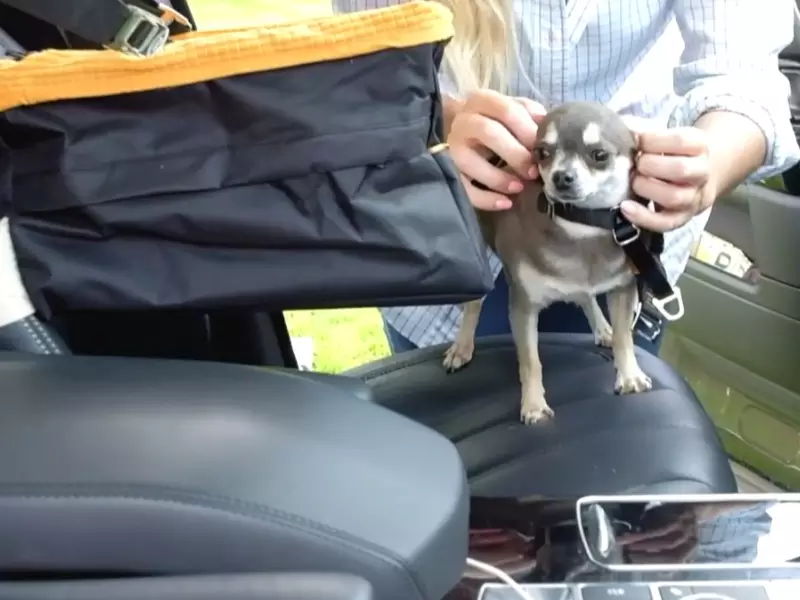
Utilizing additional safety measures, such as a seat belt tether
While the dog car seat itself provides a secure and cozy spot for your pet, it is always wise to add an extra layer of protection. Using a seat belt tether designed specifically for dog car seats can help to anchor the seat in place and prevent it from shifting or tipping during the journey. The seat belt tether should be attached to the car seat’s built-in anchor points or securely fastened to the vehicle’s seat belt. This additional safety measure provides peace of mind and ensures that your furry companion stays safe and secure throughout the ride.
Regularly inspecting the installation for any signs of wear or damage
Once you have installed the dog car seat, it is crucial to regularly inspect the installation to ensure that it remains in optimal condition. Check for any signs of wear or damage, such as frayed straps or loose fasteners. These issues can compromise the effectiveness of the seat and potentially put your pet at risk. Additionally, ensure that all the seat’s buckles and straps are properly fastened and tightened before every car ride. By routinely inspecting the installation, you can identify and address any potential issues, ensuring the ongoing safety and comfort of your beloved pet.
Introducing Your Dog To The Car Seat Gradually
Familiarizing your dog with the car seat in a positive manner
Introducing your dog to a car seat can be a new and potentially overwhelming experience for them. To ensure a smooth transition, it’s important to familiarize your dog with the car seat gradually and in a positive manner.
Firstly, place the dog car seat in an area where your dog spends a lot of time, such as their favorite corner or by their bed. Allow them to explore it at their own pace, making sure to leave treats or toys nearby to create a positive association. This will help your dog feel comfortable and curious about the car seat.
As your dog becomes more familiar with the car seat, invite them to sniff and investigate it further. Encourage them with calming words and gentle praise. Remember, the goal is to create a positive and stress-free experience for your furry friend.
Next, start incorporating short sessions of sitting in the car seat with your dog. Start by placing them in the seat for just a few seconds, allowing them to adjust to the new surroundings. Gradually increase the amount of time they spend in the seat, rewarding them with treats and praise for their calm behavior.
Gradually increasing the duration of car rides with the seat
Once your dog is comfortable sitting in the car seat for an extended period, it’s time to start increasing the duration of car rides with the seat.
Begin with short drives around the neighborhood, allowing your dog to get used to the movement and sounds of the car. Make sure to choose routes that your dog enjoys, such as passing by their favorite park or getting a glimpse of their furry friends.
During these short rides, pay attention to your dog’s behavior and comfort level. If they start displaying signs of anxiety or stress, such as excessive panting or pacing, it’s essential to provide reassurance and comfort. Pull over if necessary and offer a treat or a gentle pat to help calm them down.
As your dog becomes more accustomed to car rides with the seat, gradually increase the distance and duration of the trips. Ensure they have access to fresh water and breaks to stretch their legs and relieve themselves as needed. Keeping their comfort and safety in mind throughout the journey is vital.
Preparing The Car Seat For Maximum Comfort
When it comes to taking your furry friend on car rides, their comfort and safety should be a top priority. Installing a dog car seat is an excellent way to provide them with a secure and cozy space during your journeys. In this article, we will discuss how to make your dog’s car seat even more comfortable by addressing two essential factors: adding cushions or blankets for extra support and adjusting the incline of the seat to suit your dog’s preference.
Adding cushions or blankets for extra support
One of the simplest and most effective ways to enhance the level of comfort in your dog’s car seat is by adding cushions or blankets. These additional padding materials provide extra support and help alleviate any pressure points your dog may experience during the ride. Here’s how you can go about it:
- Start by selecting suitable cushions or blankets that are soft yet durable.
- Ensure that the size of the cushions or blankets matches the dimensions of the car seat, as a perfect fit will prevent them from sliding around.
- Place the cushions or blankets strategically in the car seat, focusing on areas where your dog needs the most support, such as their back, hips, and neck.
- Secure the cushions or blankets in place with the help of straps or fasteners, if provided with the car seat.
By adding cushions or blankets to your dog’s car seat, you are not only maximizing their comfort level but also protecting them from any potential discomfort that may arise during the journey.
Adjusting the incline of the seat to suit your dog’s preference
Just like humans, dogs have their individual preferences when it comes to reclining positions. Some dogs may enjoy a more upright posture, while others may prefer a slightly reclined seat. Ensuring that the car seat’s incline matches your dog’s preference will greatly enhance their overall comfort. Follow these steps to adjust the seat’s incline:
- Consult the car seat manufacturer’s instructions to understand the mechanism for adjusting the incline.
- Loosen the incline adjustment straps or mechanisms, if applicable.
- Observe your dog’s body language and behavior to determine their preference for a more upright or reclined position.
- Gradually adjust the incline of the seat until you find the angle that your dog seems most comfortable in.
- Ensure that the incline mechanism is securely fastened, keeping the seat in the desired position.
By accommodating your dog’s incline preference, you are showing them that their comfort matters. This simple adjustment can go a long way in making their car seat a haven of relaxation during journeys.
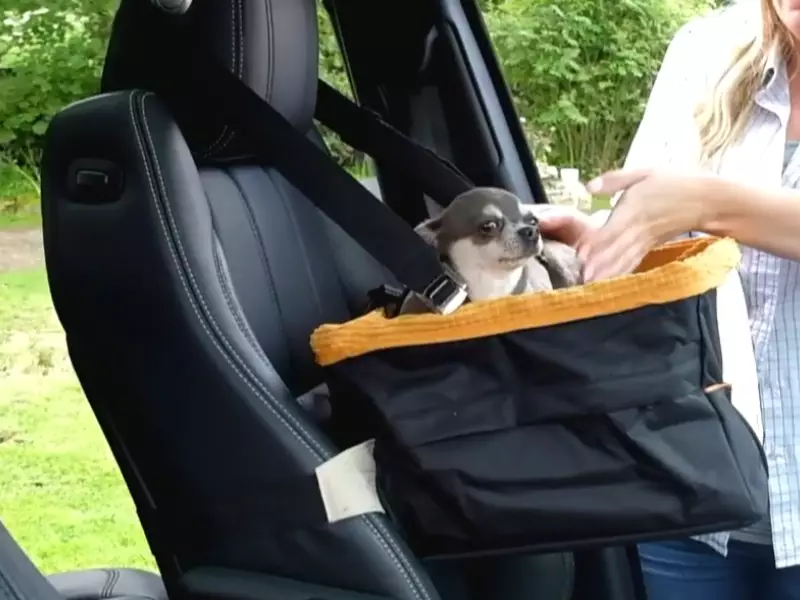
Temperature And Airflow Considerations For Your Dog’S Well-Being
When it comes to traveling with your furry friend, their comfort and safety should always be a top priority. Installing a dog car seat is a great way to ensure your dog stays secure while on the road. However, it’s important to remember that just like humans, dogs can be sensitive to extreme temperatures and need proper ventilation to stay cool and comfortable.
Avoiding Extreme Temperatures in the Car
Extreme temperatures can have a detrimental impact on your dog’s well-being. It’s crucial to avoid exposing them to sweltering heat or unbearable cold during car rides. Here are a few tips to help you keep your dog comfortable:
- Always check the weather forecast before heading out. If it’s going to be scorching hot or freezing cold, consider postponing your trip or finding alternative transportation options for your dog.
- Get a car seat with temperature control features. Look for seats that are equipped with cooling or heating functions, so you can adjust the temperature to keep your furry friend comfortable.
- Use window shades or covers to block direct sunlight. Excessive heat from the sun can make the interior of the car unbearable for your dog. Window shades can help keep the temperature down and protect them from harmful UV rays.
- Avoid leaving your dog unattended in the car. Even on a mild day with the windows cracked, the temperature inside a parked car can rise or drop rapidly, putting your dog at risk of heatstroke or hypothermia.
Ensuring Proper Ventilation for Fresh Air Flow
Proper ventilation is essential to ensure your dog receives enough fresh air during the car ride. Here are some tips to help you maintain a well-ventilated environment:
- Keep the windows cracked open. This allows fresh air to circulate in the car and prevents it from becoming stuffy.
- Consider using a car seat with mesh panels. These seats provide better airflow and allow your dog to feel the breeze, keeping them cool and comfortable.
- If your car has air conditioning, make sure it’s working properly. Set the temperature to a comfortable level and direct the airflow towards the backseat where your dog’s car seat is located.
- Avoid using strong air fresheners or sprays inside the car. These can irritate your dog’s sensitive respiratory system and make the air quality less favorable for them.
By being mindful of temperature and airflow considerations, you can ensure your dog’s well-being during car rides. Remember, a happy and comfortable pup makes for a stress-free journey for both you and your furry friend!
Regular Maintenance To Keep The Car Seat In Good Condition
Regular maintenance of your dog car seat is essential to ensure its longevity and provide a safe and comfortable journey for your furry companion. By inspecting for any loose or damaged components, and tightening straps and ensuring secure attachments, you can keep the car seat in optimal condition. Follow these simple maintenance steps to extend the life of your dog car seat:
Inspecting for any loose or damaged components
Regularly inspecting your dog car seat for any loose or damaged components is crucial for your pet’s safety. Here’s how you can perform a comprehensive inspection:
- Check the seat’s frame for any signs of wear or damage, such as cracks or bent parts.
- Ensure that screws, nuts, and bolts are securely tightened, and replace any missing or damaged fasteners.
- Inspect the fabric for tears, frayed edges, or weakened stitching, as these can compromise the seat’s integrity.
- Look for any loose or broken straps, buckles, or connectors. Replace them immediately if necessary.
- Check the padding or cushioning for any signs of compression or flattening. If the cushioning is no longer providing adequate support, consider replacing it.
Tightening straps and ensuring secure attachments
Properly securing your dog car seat is essential to prevent it from shifting or becoming a potential hazard during travel. Follow these steps to ensure secure attachments:
- Attach the straps to the designated anchor points in your vehicle. Make sure they are fastened tightly and cannot easily slip or loosen.
- Double-check that the seat is securely fastened to the car’s seat by tightening any straps or connectors as necessary.
- Adjust the straps to ensure a snug fit around your dog’s body, but be careful not to restrict their movement or cause discomfort.
- If your dog car seat has a tether or leash attachment, verify that it is securely connected to your pet’s harness, providing an additional layer of safety.
Remember, regular maintenance and inspections are crucial for keeping your dog car seat in good condition. By identifying and addressing any issues promptly, you can provide your furry friend with a safe and comfortable ride every time you hit the road together.
Cleaning Tips For A Hygienic Dog Car Seat
When it comes to keeping your dog car seat clean and hygienic, regular cleaning is essential. A dirty dog car seat not only looks unsightly but can also harbor bacteria, odors, and allergens that can be harmful to both you and your furry friend. In this article, we will share some effective cleaning tips that will help you maintain a clean and hygienic dog car seat.
Removing any debris or pet hair from the seat
The first step in cleaning your dog car seat is to remove any debris or pet hair that may have accumulated. A dog car seat can quickly become a dumping ground for dirt, leaves, and other particles, as well as a breeding ground for loose fur. To remove this debris, follow these simple steps:
- Start by thoroughly vacuuming the dog car seat using a handheld vacuum or an attachment specifically designed for dealing with pet hair. Make sure to vacuum all the nooks and crannies, including the crevices between the seat cushions.
- If the dog car seat covers are removable, take them off and shake them outside to remove any loose debris. You can also use a lint roller or a pet hair removal brush to further remove any stubborn pet hair.
- For any remaining pet hair that is hard to remove, try using a damp rubber glove or a slightly damp microfiber cloth. Simply run your gloved or cloth-covered hand over the surface of the seat to gather the pet hair.
Using pet-friendly cleaning products to maintain cleanliness
Once you have removed all the debris and pet hair, it’s time to clean and sanitize your dog car seat to ensure its hygiene. However, it is important to choose cleaning products that are safe for your furry friend. Here are some pet-friendly cleaning products you can use:
| Cleaning Product | Description |
|---|---|
| Baking Soda | Baking soda is a natural deodorizer that can help eliminate odors from your dog car seat. Sprinkle baking soda liberally over the entire seat, let it sit for a few hours, then vacuum it up. |
| Vinegar and Water Solution | Mix equal parts of water and white vinegar in a spray bottle. Spray the solution onto the seat and wipe it down with a clean cloth. Vinegar is great for removing stains and killing bacteria. |
| Pet-Safe Fabric Cleaner | There are many pet-safe fabric cleaners available on the market that are specifically formulated to remove stains and odors caused by pets. Always follow the instructions provided by the manufacturer when using these products. |
Remember to always test any cleaning product on a small, inconspicuous area of the seat first to ensure it doesn’t cause any discoloration. Additionally, make sure to thoroughly rinse and dry the seat after cleaning to avoid any residue or dampness that could potentially attract more dirt or mold.
By following these cleaning tips, you can maintain a clean and hygienic dog car seat that both you and your furry friend will appreciate. Regular cleaning will not only keep the seat looking good but also promote a healthier and more pleasant travel experience for everyone.
Frequently Asked Questions Of How To Install A Dog Car Seat
How Do You Attach A Dog Car Seat To A Car?
Attach a dog car seat by securing it with the car’s seat belt or using the attachment straps provided. Follow the manufacturer’s instructions for proper installation. Make sure the seat is firmly in place and your dog is safely secured before driving.
Why Are Dog Car Seats Elevated?
Dog car seats are elevated to provide a safe and comfortable space for dogs during car rides. The elevation helps them have a better view outside and reduces motion sickness. It also protects them from potential injuries during sudden stops or accidents.
How Do You Install A Car Seat Correctly?
To install a car seat correctly, follow these steps:
1. Read the car seat manual carefully.
2. Choose the right location in the back seat.
3. Secure the seat with the seat belt or LATCH system.
4. Adjust the straps to fit snugly.
5. Perform the pinch test to ensure a tight fit.
How Do You Attach A Pet Carrier To A Car Seat?
Attach a pet carrier to a car seat by securing it with a seatbelt or using a carrier strap. Make sure it’s stable and won’t tip over during the journey. Always follow the carrier manufacturer’s instructions for proper installation. Safety first!
Conclusion
Installing a dog car seat is a crucial step in ensuring your pet’s safety and comfort during car rides. By following the step-by-step guide outlined in this blog post, you can easily install a dog car seat and provide your furry friend with a secure and enjoyable travel experience.
Remember, taking the time to properly install a dog car seat demonstrates your commitment to keeping your pet safe on the road. So, get started today and give your dog the best travel experience possible.
